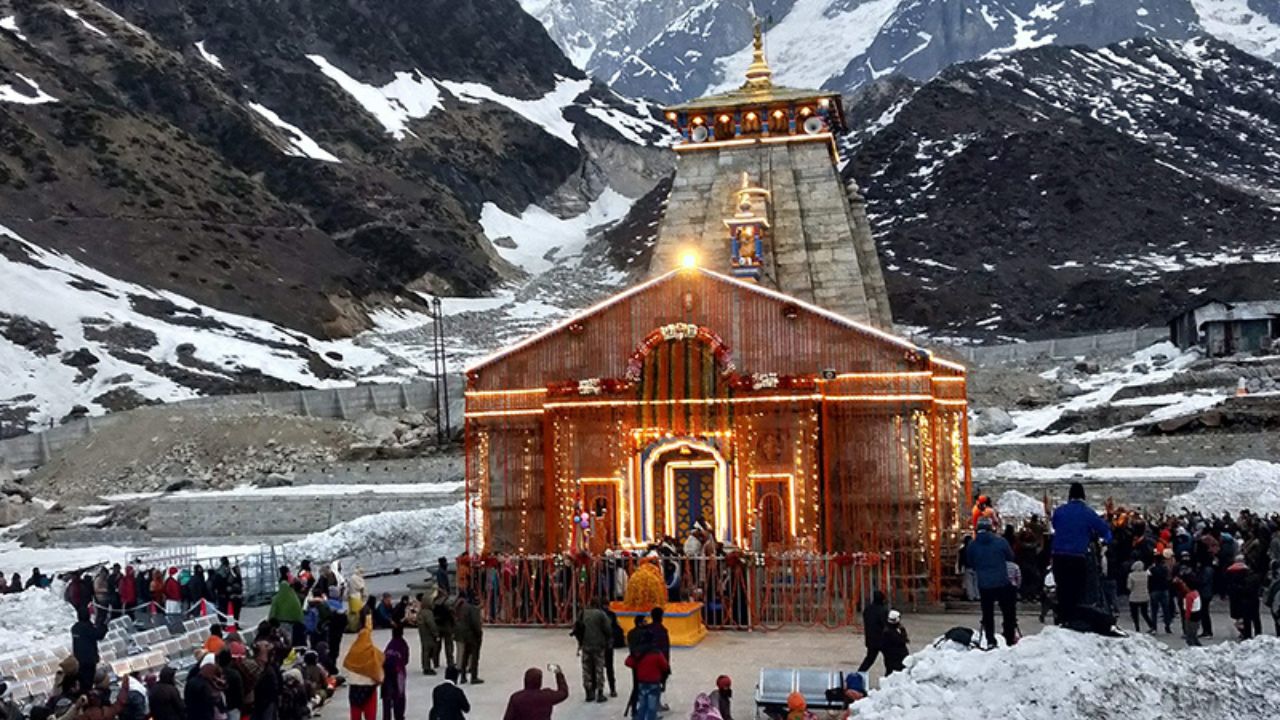How to Prepare for the Kedarnath Trek: Fitness, Gear, and Altitude Tips

Strong 8k brings an ultra-HD IPTV experience to your living room and your pocket.
The Kedarnath Trek is more than just a physical journey—it is a spiritual awakening wrapped in the raw magnificence of the Himalayas. Every year, thousands of devotees and trekkers from across India and the world brave challenging altitudes, unpredictable mountain weather, and steep terrain to reach the revered Kedarnath Temple, one of the twelve Jyotirlingas of Lord Shiva. But the journey is not an easy one. Covering around 16 kilometers from Gaurikund to Kedarnath, this trek demands not only faith but also a fair amount of preparation.
Many pilgrims begin this adventure driven by devotion, but without adequate fitness or awareness of what the high-altitude terrain demands, the journey can become difficult and even unsafe. In this guide, we explore everything you need to know to prepare for the Kedarnath Trek—whether you’re a first-time trekker or someone seeking a deeper connection with the mountains.
Understanding Why Preparation Is Crucial for the Kedarnath Trek
Kedarnath is situated at an altitude of approximately 11,755 feet (3,583 meters), where oxygen levels drop significantly and the body takes time to adjust. Most people begin the trek from Gaurikund, which lies at around 6,500 feet. That’s an elevation gain of over 5,000 feet in a single day’s journey, which is no small feat. The trail includes steep ascents, rocky patches, narrow bends, and at times, slippery sections, especially if it has rained or snowed recently.
While the scenic beauty and spiritual energy make it worth the effort, the terrain can be unforgiving for those who are unprepared. Breathlessness, exhaustion, cramps, and altitude sickness are common complaints among trekkers. That’s why it's vital to begin preparing weeks in advance.
The Role of Fitness and Endurance in Trekking to Kedarnath
Physical stamina is one of the key factors that determine whether or not you can enjoy the Kedarnath Trek. You don’t have to be a mountaineer or an athlete, but building up a good level of fitness in the weeks leading up to your journey can significantly improve your overall experience.
Start by incorporating cardio exercises like brisk walking, jogging, swimming, or cycling into your daily routine. Ideally, you should begin at least four to six weeks before your trek. Walking or jogging 4–5 kilometers daily will help improve your stamina. Climbing stairs is another great way to build leg strength and simulate uphill walking. Over time, your lungs and muscles will adapt, helping you deal better with the low-oxygen conditions at higher altitudes.
If possible, go for short weekend treks or long nature walks carrying a backpack similar to what you plan to use during the trek. This will condition your body for the actual trekking experience and reduce the risk of cramps or fatigue.
Choosing the Right Gear for a Safe and Comfortable Trek
Another important element of preparation is packing the right gear. While the trek to Kedarnath is supported by several facilities and resting points, it’s still a high-altitude Himalayan trail, and having the right clothing and equipment can make a world of difference.
Layered clothing is a must. Mornings and evenings are often freezing, while afternoons can get surprisingly warm—especially under the sun at higher altitudes. Begin with a thermal base layer, followed by a fleece or sweatshirt, and top it with a windproof and waterproof outer layer. Carry a good-quality rain jacket, as the weather can change rapidly in the mountains.
Your footwear should be sturdy, waterproof, and provide ankle support. Ordinary sports shoes or sandals are not recommended, as they can increase the risk of slips and injuries on uneven paths. Pair your shoes with woolen or moisture-wicking socks to avoid blisters and maintain warmth.
Don’t forget your accessories—carry a good-quality backpack with padded shoulder straps, a water bottle or hydration bladder, sunglasses, sunscreen, lip balm with SPF, and a light cap. If you are prone to knee pain or want additional support, a trekking pole can be extremely helpful, especially during the steep ascents and descents.
Dealing With High Altitude and Preventing AMS
Altitude sickness, or Acute Mountain Sickness (AMS), is a very real concern on the Kedarnath Trek. As you ascend, oxygen levels drop and the body can take time to adapt. AMS can manifest as headaches, nausea, dizziness, shortness of breath, and even disorientation. If left unchecked, it can become serious.
To prevent AMS, start your trek early in the day and maintain a slow but steady pace. Avoid overexertion and take short breaks when needed. If possible, spend a night in Gaurikund or nearby locations like Sonprayag or Guptkashi before you begin the trek. This gives your body a bit of time to start adjusting to the higher altitude.
Drink plenty of water throughout the trek, even if you’re not thirsty. Dehydration can make altitude sickness worse. Carry ORS or electrolyte powders to stay hydrated. Avoid alcohol and smoking before and during the trek, as both can affect your lungs and increase the risk of AMS.
If you feel any symptoms of altitude sickness—such as a persistent headache, nausea, or unusual fatigue—it’s important to take it seriously. Rest immediately, inform your group, and descend to a lower altitude if necessary. Don’t ignore your body’s signals.
Knowing the Best Time to Trek to Kedarnath
Timing your trek right can make a huge difference. The Kedarnath Temple opens to pilgrims around the end of April or early May and remains accessible until October, just before heavy snowfall begins.
The best months to plan the trek are May–June and September–October. During May and June, the weather is relatively pleasant, and the route is well-maintained. However, it also happens to be the peak season, so expect large crowds. The post-monsoon months of September and October are equally beautiful, with lush greenery, fewer people, and clearer skies.
Avoid the trek during July and August, which is the monsoon season. Landslides, slippery trails, and unpredictable weather make trekking during this period dangerous.
Mental Readiness Is Just As Important
Physical strength and gear will take you only so far—your mindset matters just as much. The final few kilometers of the trek can be mentally exhausting, especially when fatigue starts to set in and the air gets thinner. The sight of fellow pilgrims, many of whom walk barefoot or with little support out of pure devotion, can be a powerful motivator.
Remind yourself of your goal. Whether it is spiritual fulfillment, adventure, or simply the beauty of the Himalayas, stay focused on what brought you here. Walk at your own pace, take in the surroundings, and stay positive. The destination is worth every ounce of effort.
Final Thoughts
The Kedarnath Trek is not just a physical adventure; it’s an emotional and spiritual voyage. While it does demand preparation, the rewards far outweigh the challenges. From snow-capped peaks and waterfalls to chants of “Har Har Mahadev” echoing in the valleys, every step on this sacred trail brings you closer to something greater than yourself.
With the right fitness, gear, mindset, and respect for the mountains, you can make this trek one of the most meaningful experiences of your life. Prepare well, walk with faith, and let the mountains guide you toward an unforgettable journey.
Note: IndiBlogHub features both user-submitted and editorial content. We do not verify third-party contributions. Read our Disclaimer and Privacy Policyfor details.







